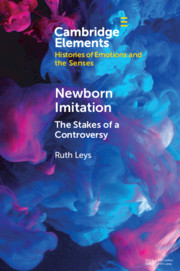Element contents
Newborn Imitation
Published online by Cambridge University Press: 03 July 2020
Summary
- Type
- Element
- Information
- Online ISBN: 9781108920308Publisher: Cambridge University PressPrint publication: 30 July 2020
References
- 13
- Cited by



